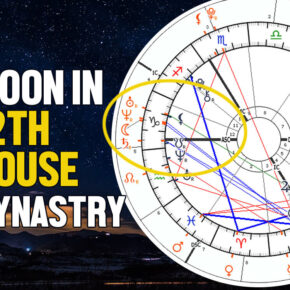Ever wondered how those mythical creatures, mermaids, make little merbabies? Since the first stories of mermaids emerged, humans have speculated about how mermaid reproduction might work. After all, half-human and half-fish, something’s got to give, right? Do mermaids lay eggs like fish or give live birth like humans? Do mermen even exist, or do mermaids reproduce asexually?
Over the centuries, myths and legends have proposed some theories to explain the mysterious mermaid reproductive process. Maybe they transform into humans during a full moon. Maybe they mate with humans to produce mer-human hybrid babies. Or maybe there’s an entire underwater mermaid reproductive cycle we know nothing about. The possibilities are as endless as the ocean, and the truth is out there…somewhere under the sea.
The Mythological Origins of Mermaids
Mermaids have captured our imagination for centuries, but where did they originate? The mythological roots of mermaids date back thousands of years and come from multiple ancient cultures. Some of the earliest depictions of mermaids appear in Mesopotamian artifacts from around 1000 BC. These mermaids, known as sea goddesses or merfolk, were half-fish and half-human figures associated with fertility and creation.
The ancient Assyrians worshiped Atargatis, a mermaid goddess who accidentally killed her human lover. In her grief, she transformed herself into a mermaid so she could live in the sea. The ancient Greeks and Romans also had their own stories of mermaids and mermen. The Greek goddess Amphitrite was a mermaid who married Poseidon, god of the sea. The Roman goddess Salacia was also depicted as a mermaid.
In Greek myths, they were called sirens. They would sing beautiful songs from the coast. Their voices were so lovely that sailors couldn’t resist sailing toward them. But the sirens lived near dangerous rocky shores. So when the sailors got too close to hear the singing better, their ships would crash and sink. That’s how the sirens tricked sailors to their doom.
Over time, these legends blended together and evolved, giving rise to the mermaid tales we know today. Despite their differences, the core idea remains the same across cultures – mermaids represent a link between the human and aquatic worlds, embodying both beauty and danger.
Common Theories On Mermaid Reproduction
A popular theory is that mermaids are half-human, half-fish hybrids. If that’s the case, reproduction would require interspecies mating between humans and fish, which is biologically impossible. So, how do they reproduce?

Asexually
Some people actually think that mermaids don’t need males to reproduce. They believe mermaids can get pregnant all on their own, like some lizards and birds. The theory is that the female mermaids have eggs inside them that can grow into baby mermaids without needing sperm from a male. They think the eggs just develop on their own.
If that’s true, it would make sense why mermaids are usually shown as very attractive ladies in stories and movies. Since they wouldn’t need strong mermen to help make babies, the tales could focus more on just the mermaid characters.
The idea is that parthenogenesis, that’s what it’s called, allows the species to keep going even if there aren’t enough male mermaids around. It’s quite interesting to think about magical creatures reproducing in such a sci-fi way, isn’t it? But who knows, if mermaids did exist, maybe that’s how their biology would work underwater.
Laying Eggs
Others speculate that mermaids lay eggs like fish that are externally fertilized after mating. The eggs would be laid in underwater caves or shelters and guarded by the males until hatching. Newly hatched mermaids, or “merlings,” would emerge with human upper bodies and fish-like lower bodies.
Mermaids are said to inhabit oceans and lakes, so their eggs would need to be laid in water for the offspring to develop and hatch. The eggs could be microscopic, similar to plankton, drifting in the currents until hatching into mer-infants.
Giving Birth Like Other Similar Creatures
Mermaids may give live birth like whales and dolphins since they share a tail. Mermaids would surface, give birth to a single mer-baby, and promptly return it to the sea, similar to some species of sharks.
I imagine a mermaid would slowly swim closer to the surface as the time got nearer. Maybe she’d feel contractions and know it was time to push her little mer-baby out.
She’d probably breach up out of the water and quickly give one big push to get the baby out before sinking back down below. Can you picture a tiny newborn mer-baby just floating there on the surface while its mom swims back down? But she wouldn’t go too far, of course, since little ones can’t swim well yet.
A Mystical Process
A more magical theory is that mermaids reproduce through a mystical process not grounded in science. For example, they could emerge spontaneously from sea foam, kelp forests, or the mingling of human souls drowned at sea with sea life. They may not reproduce at all but instead have a fixed population.
Of course, if mermaids did come to be through such mystical means rather than biological reproduction, it would help explain why we’ve never actually witnessed them having babies. Perhaps their population remains stable over time because new mermaids only materialize when the conditions are just right, like a big storm that stirs up the ocean waters. And since they wouldn’t need to reproduce to survive as a species, it’s no wonder we’ve never spotted mermaids caring for little mer-babies!
Final Words – It’s Fun To Speculate!
As mythical creatures, there may not actually be a way for mermaids to reproduce in a strictly biological sense. Their existence relies more on imagination and legend than scientific plausibility. We may never know for sure how mermaids are able to procreate, if at all – and maybe that’s part of their enduring mystery and appeal.
It’s impossible to know for sure how mermaids would reproduce. At the end of the day, mermaids are fantasy, so we can imagine their reproduction working however we like. Maybe they lay eggs on the seafloor or give live birth after mating with humans. Or perhaps they have some magical way of procreating that we landlubbers couldn’t even fathom.








